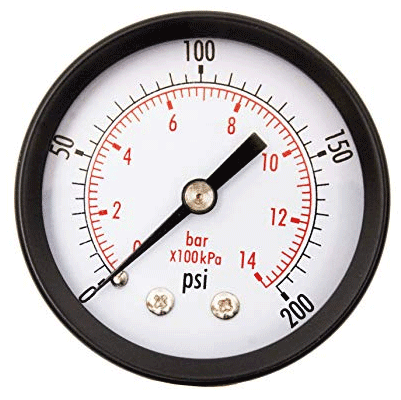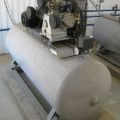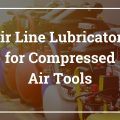Hey! This site is reader-supported and we earn commissions if you purchase products from retailers after clicking on a link from our site.
Air gauges are essential pieces of equipment for your air compressor. They measure the amount of pressure within your air compressor in PSI (pounds per square inch). You will typically have 2 gauges equipped on an air compressor.
This article will present to you all the relevant information on air compressor gauges and why you have 2 gauges equipped on your compressor system!
Table of Contents
- What are Air Compressor Gauges?
- How do Air Compressor Gauges Work?
- How to Read a Pressure Gauge
- Why Two Air Compressor Gauges?
- Replacing an Air Gauge
- FAQs (Frequently Asked Questions)
What are Air Compressor Gauges?
Air compressor pressure gauges measure the pressure in pounds per square inch (PSI), which usually tends to be within the range of 0 to around 250, depending upon the specific type of air compressor and the gauges on it.
As I already introduced, any typical air compressor comes equipped with two pressure gauges that are:
- tank gauge
- regulator gauge
Tank Gauge
The first is the tank gauge, this is there to display the air pressure level that is in the compressor tank, and reacts to the air pressure level being increased by the air compressor pump.
Though it does not directly work with the pressure switch, the pressure switch also monitors the tank pressure so it knows when to start or stop the compressor motor.
Therefore, you can use the tank pressure gauge as an indication on whether your air compressor is cutting in and cutting out at the correct pressures.

The tank pressure gauge needle will display a lower pressure when the compressed air is being used, and then will increase rapidly when it falls to the cut in pressure as the pressure switch makes the compressor cut in to generate more compressed air.
Regulator Air Gauge
The second compressor air gauge displays the pressure setting of the air regulator. This pressure setting is the air pressure which the air compressor user wants to send down the air line to the pneumatic tool.
To keep it brief, air regulators are used in order to typically reduce the tank pressure to the most suitable or best operating pressure of the pneumatic air tool. The air regulator will have a small knob that you’re able to turn to adjust the pressure and you will be able to view this on the regulator gauge.
How do Air Compressor Gauges Work?
A compressed air gauge will have a face under a plastic shield, on which pressure levels are printed. A needle is attached to a shaft protruding through the center of the face, and that needle is calibrated to rotate to a pressure as the gauge internal components are subjected to air pressure from the air line to which the regulator is attached.
A great deal of more information is available about compressor air gauges if you care to watch the following video:
How to Read a Pressure Gauge
There are 4 simple steps you can follow to help you read a pressure gauge and these are:
1. Identify the major units on the pressure gauge
2. Find the difference between the major units (e.g. 0-100-200 etc…)
3. Count the spaces between the major units marked on the pressure gauge
4. Determine the amount of pressure that each space represents
Now you have all the necessary preparations to be able to read off the unit value of where the needle inside the pressure gauge is located!
For more information on this, watch the youtube video below!
Why Two Air Compressor Gauges?
Both pressure gauges are necessary for the safe and effective use of air compressors, and monitoring the pressures within its system at different points. They can be important in spotting irregularities within the system and therefore ensuring the air compressor works at its optimum.
The first allows you to monitor the pressurized air inside the tank and ensure it’s operating as normal (cutting in and cutting out when it should) and the second allows you to view the pressure you’re regulating (altering) within the air line to reach your pneumatic tool.
Replacing an Air Gauge
Most of the air gauges on home and small workshop type air compressors are not of particularly great quality.
Over time, the needle may break, the needle shaft might fail, the plastic cover may get broken, or more likely, very humid air has, over often a short while, corroded the gauge internals to the point that the gauge doesn’t display pressure accurately anymore.
Air gauges are pretty important to the safe operation of your air compressor, and to ensure that your downstream tools and applications get the correct operating pressure.
If the tank gauge fails, you won’t be able to see the cut out or cut in pressure levels as air is built and consumed, and you want to know this in the event that the pressure switch fails and a replacement becomes necessary.
When shopping for a new air gauge, it is helpful to take the old one with you. That will ensure that you match the mounting thread and acquire a gauge with the same, or similar, pressure range as the old.
Air gauges shouldn’t set you back more than $10-$15 for a general purpose type. If you select a stainless steel gauge, or one with different characteristics, it might be more. For the home compressor and small workshop compressor user, I recommend you stick with the basic unit.
FAQs (Frequently Asked Questions)
The two gauges on your compressor will be the tank and regulator gauges. The tank gauge displays the air pressure level that is in the compressor tank and the regulator gauge displays the pressure setting of the air regulator which is adjusted for your desired application.
The answer depends upon your air tools. For general use air tools that are used with a portable air compressor, they typically require pressure between 70 and 90 PSI whilst larger tools that are connected to bigger and most likely stationary air compressors require around 100 to 120 PSI.
150 PSI on an air compressor means that the air compressor contains a maximum tank capacity of 150 pounds per square inch of pressurized air.





